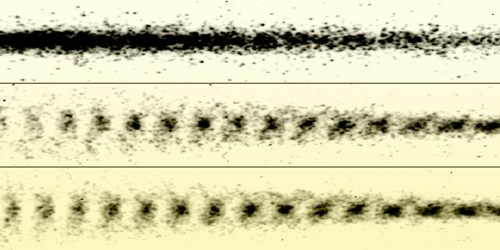Controlling Instabilities in a Plasma Particle Accelerator
In conventional particle accelerators, particles are propelled using radio-frequency cavities, typically completing multiple laps of a circuit before reaching their target energy. An alternative technique that can get particles up to speed much more quickly is proton-driven plasma wakefield acceleration, but this method is prone to the self-modulation instability (SMI), which breaks the particle bunch into a train of microbunches. Now, researchers at the Advanced Proton Driven Plasma Wakefield Acceleration Experiment (AWAKE) at CERN have found a way to control how the SMI develops, suggesting the possibility of exploiting the effect in future particle accelerators [1].
When a proton bunch is injected into a plasma at relativistic speeds, it generates a sequence of electron-density waves called wakefields. “Surfing” these waves is how subsequently injected charged particles can be accelerated at rates beyond conventional accelerators. But the wakefields can also affect the proton bunch itself, amplifying initial proton-density variations in an unpredictable, self-reinforcing process that makes it difficult to synchronize the injection of the particles to be accelerated.
The AWAKE team took control of this process by injecting a relativistic electron bunch into the plasma less than a nanosecond before the protons. These electrons drive wakefields that are strong enough to overwhelm density fluctuations in the plasma and in the proton bunch, which would usually make the outcome of the SMI uncertain. Crucially, the researchers found that the amplitude of the wakefields and the growth of the SMI could be regulated by varying the total charge in the electron bunch. The researchers hope that this new ability to control and reproduce the SMI can be applied to accelerate electron beams in particle-physics experiments in the next decade.
–Allison Gasparini
Allison Gasparini is a freelance science writer based in Santa Cruz, CA.
References
- L. Verra et al. (AWAKE Collaboration), “Controlled growth of the self-modulation of a relativistic proton bunch in plasma,” Phys. Rev. Lett. 129, 024802 (2022).




